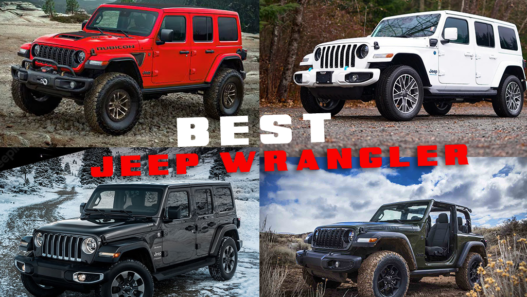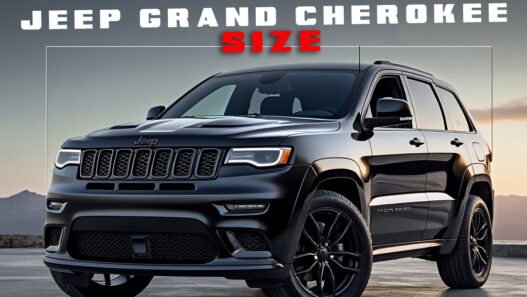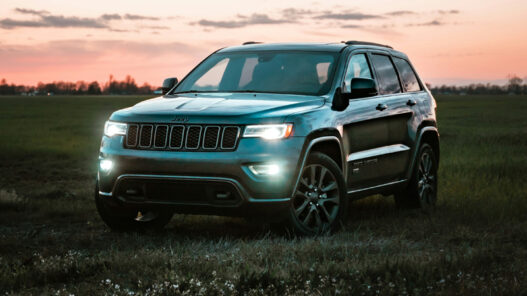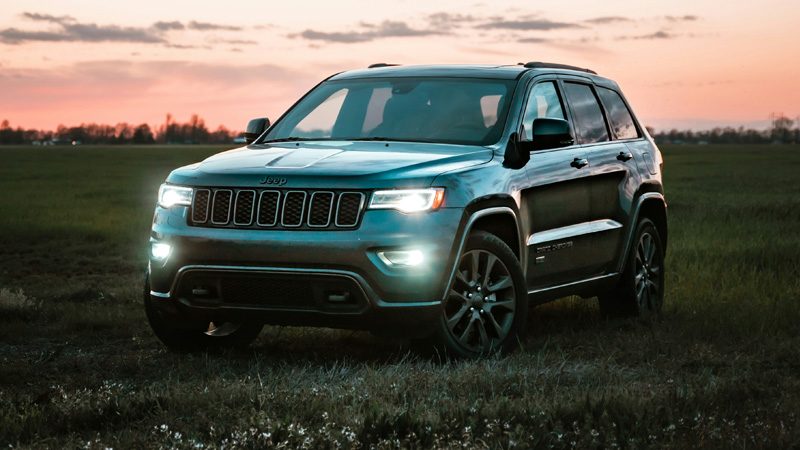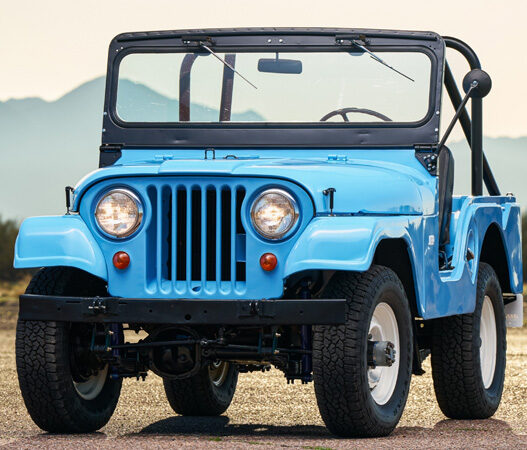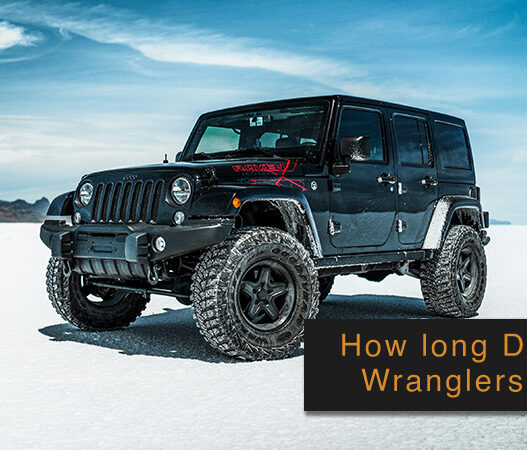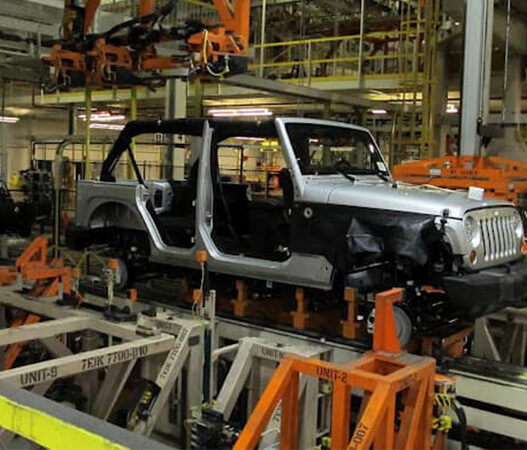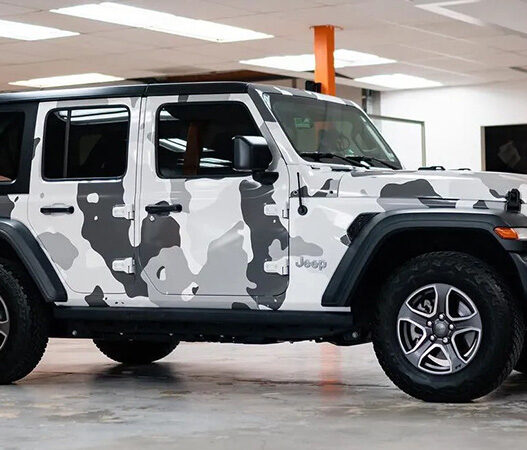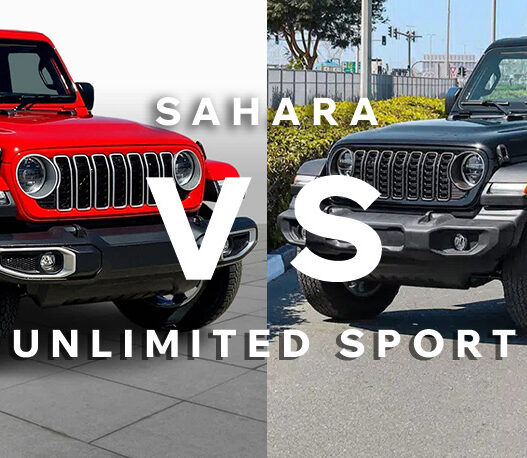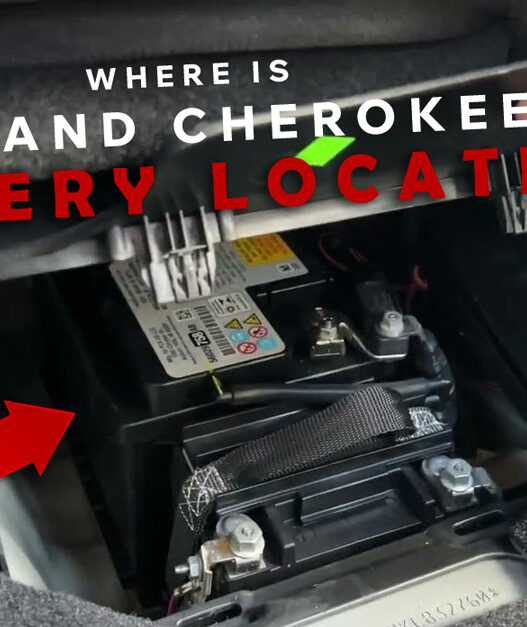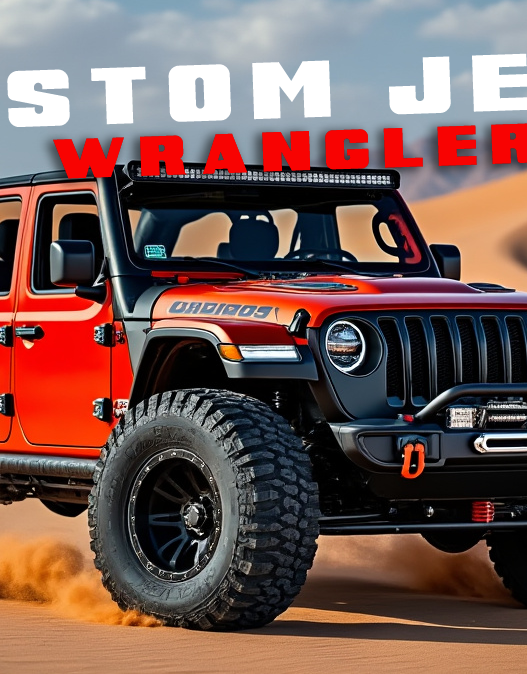You have come across the Jeep of your dreams – whether it is the classic Cherokee or the rugged Wrangler you have long been seeking. However, upon closer inspection, you notice that the odometer shows a mileage exceeding 100,000 miles. So you ask yourself – Should I Buy a Jeep Cherokee With Over 100K Miles?
That is a substantial distance covered by the vehicle. It is natural to question whether it is wise to purchase a Jeep Cherokee with such high mileage.
High-mileage cars are often avoided by buyers due to the belief that more miles equate to greater wear and tear, leading to potential costly issues in the future. However, dismissing your aspirations of owning a Jeep simply based on the odometer reading could mean missing out on a significant opportunity.
It is possible to purchase a Jeep Cherokee or Wrangler with mileage exceeding 100,000, provided that a thorough inspection is conducted, maintenance records are obtained, and the maintenance of major components is confirmed. Well-maintained Jeeps have the potential to reach 200,000 miles without encountering any significant issues.
By carefully evaluating the vehicle and following important guidelines, it is feasible to acquire a high-mileage Jeep and enjoy reliable performance for many years. This guide outlines the critical factors to consider when determining whether investing in a pre-owned Cherokee or Wrangler is a prudent decision.
Should I Buy a Jeep Cherokee With Over 100K Miles? 7 Evaluation Tips
If you are wondering, “Should I buy a Jeep with over 100k miles?” let’s explore seven key guidelines for assessing a high-mileage Jeep.
1. Review the Maintenance History
Examining the maintenance history is a crucial aspect when considering the purchase of a pre-owned vehicle with high mileage. Jeeps necessitate specialized maintenance to ensure optimal performance, hence it is imperative to verify that any potential options have been diligently serviced in accordance with the recommended maintenance schedule.
In particular, it is essential to check for documentation such as receipts and service records indicating regular oil changes (typically every 3,000-5,000 miles), proper flushing of transmission and transfer case fluids, and confirmation that any recalls or technical service bulletins have been addressed by the previous owner.
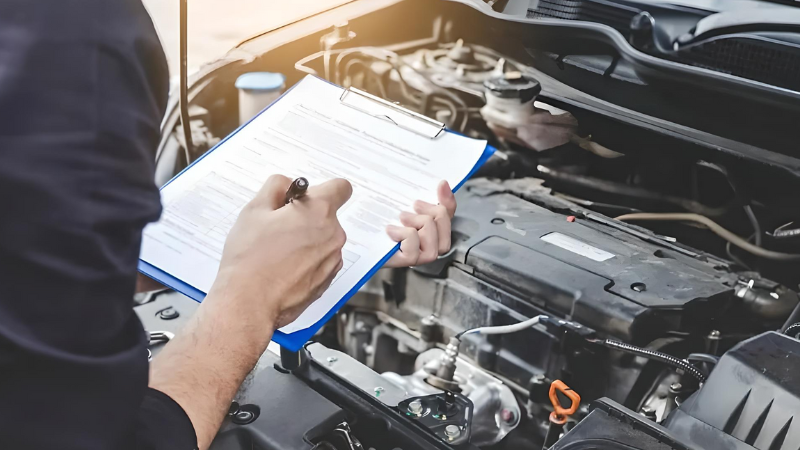
For models from 2017 to 2023, there should be a factory warranty in place until at least 60,000 miles, making recent service history accessible. In the case of older models, it is advisable to request maintenance logs from the previous owner and details of the specific service centers where the Jeep Cherokee was maintained.
2. Check the Interior
The state of the interior is also a valuable indicator of the maintenance and upkeep of a high-mileage Jeep.

When inspecting the interior, pay attention to the following signs:
- Seats and upholstery that are sagging, torn, or worn out
- Interior panels, parts, or trim that are broken
- Accessories such as power windows/locks that are not functioning properly
- Heavy dirt or stains on carpets and cargo areas
- Air conditioning systems that are sticky or not working
- Gauge clusters that appear dull or discolored
- Excessive squeaks, rattles, or vibrations
Any obvious interior issues serve as warning signs regarding the overall maintenance and care the Jeep has received from previous owners. Overlooking even small details could indicate larger problems in other areas.
3. Give Special Attention to the Exterior
The condition of the exterior provides valuable insights into the maintenance and usage of a Jeep. Take a slow walk around the vehicle, running your hands over the body panels to detect any irregularities or gaps that may suggest prior damage.

Carefully examine the paint for signs of fading, oxidation, or clear coat deterioration, especially on flat surfaces. Thoroughly inspect the tires for rugged off-road tread patterns, which could indicate exposure to challenging terrains like rocky areas.
Any signs of excessive cupping or flat spots on the tires might point to alignment issues or problems with the drivetrain. Lastly, keep an eye out for any aftermarket modifications such as lift kits, larger off-road tires, or other significant alterations.
These changes can strain the drivetrain components and result in premature wear over time.
4. Look for Rust and Corrosion
Rust and corrosion are significant threats to the durability of vehicles, gradually deteriorating the body and frame over time. This becomes a particularly crucial factor to keep in mind when considering older, high-mileage Jeeps from regions with cold climates that heavily rely on road salt.

Conduct a comprehensive examination of the common areas susceptible to rust:
- Check rocker panels and frame rails
- Inspect wheel arches and fender edges
- Examine the hood and door edges
- Look under the vehicle at the underbody, axles, and suspension parts
- Assess the condition of exhaust system hangers and mounts
Even minor surface rust has the potential to progress into significant damage and weaken the structure as it expands. It is crucial to thoroughly assess the extent of any corrosion and plan for necessary treatment or repairs if it is severe.
5. Research Common Issues / Problems
Firstly, conduct thorough research into any prevalent issues or areas of concern related to the particular Jeep model and year you are contemplating. Online platforms such as Jeep Garage and Wrangler Forum contain a plethora of information regarding problems reported by owners, recalls, and technical service bulletins.
For instance, some 2011-2013 Grand Cherokees faced challenges with faulty powertrain control modules leading to stalling and transmission difficulties, even at lower mileage. Wrangler models encountered issues with the clock spring, resulting in the airbag light remaining illuminated.
Additionally, oil leaks from the engine, transfer cases, and differentials are frequently cited in higher mileage Wranglers. By familiarizing yourself with common problems beforehand, you will be equipped to scrutinize specific areas meticulously. This will enable you to assess the seriousness of any issues based on the vehicle’s mileage and potentially avoid purchasing a problematic vehicle.
6. Check the Suspension and Undercarriage
A key benefit of owning a Jeep is its exceptional capability on trails and off-road terrain. However, this also means that Jeeps are subject to a considerable amount of rough usage and wear over time.
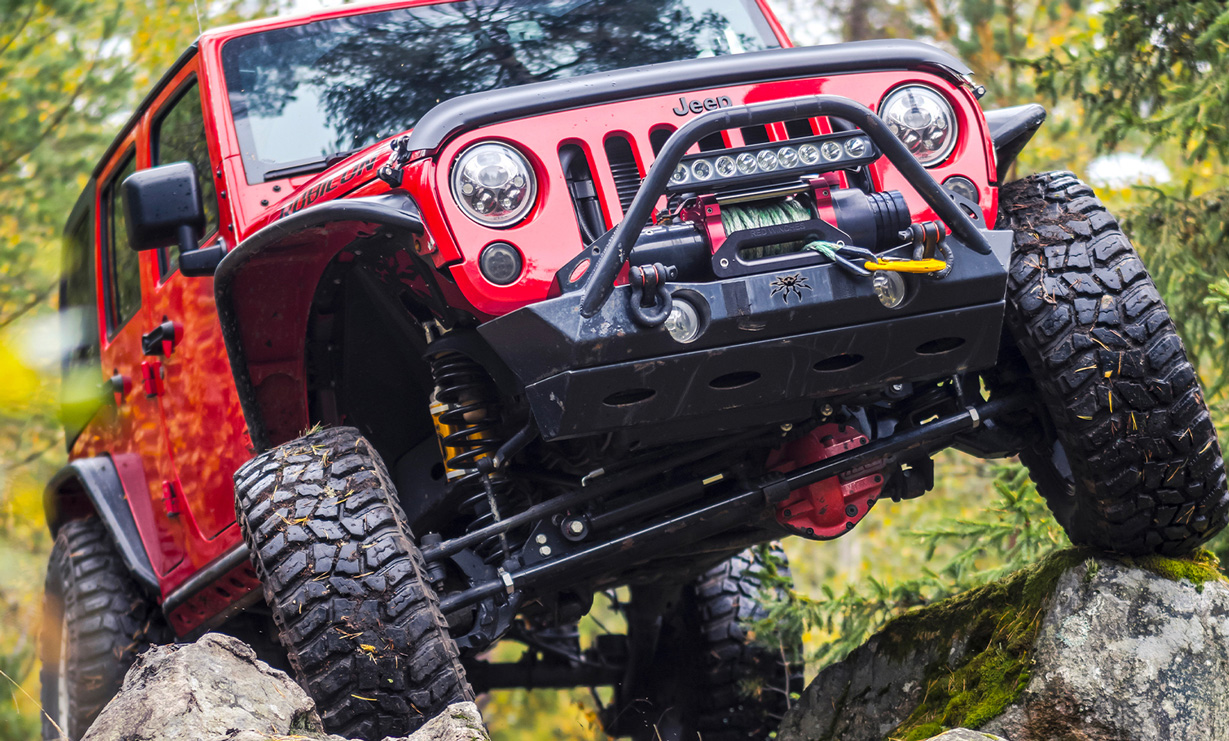
Therefore, it is crucial to thoroughly inspect the state of the suspension system and undercarriage when evaluating a high-mileage Jeep.
If feasible, lift the vehicle and assess the following components:
- Check shocks/struts for signs of leaks or excessive wear
- Inspect springs for any sagging or damage resulting from bottoming out
- Examine control arms and bushings for cracks or excessive movement
- Look at driveshafts and CV joint boots for tears, leaks, or binding
- Check the frame and body mounts for any cracks or failed welds
- Evaluate the overall undercarriage for dents, scrapes, or missing protective skid plates.
Ideally, it is recommended that major suspension parts like shocks/struts and springs be replaced around the 50,000 to 80,000-mile mark on a Jeep that has seen significant trail use. If these components have not been replaced, be prepared to budget for these more costly repairs in the near future.
Check out these replacement Bilstein 5100 Shocks and Superlift Front Coil Springs for Jeep Wranglers on Amazon to get started.
7. Take the Vehicle to the Mechanic
After completing a thorough inspection on your own, it is advisable to have a skilled mechanic examine the Jeep as well. It is recommended to choose a repair shop that specializes in servicing Jeeps and off-road vehicles.
The mechanic will elevate the vehicle and utilize diagnostic tools to scan for any error codes, potential transmission or transfer case issues, and other drivetrain problems.
Moreover, assessments such as leak checks, compression tests, and tailpipe analyses can uncover hidden issues. An independent mechanic’s evaluation will provide unbiased insights to help you determine if a high-mileage Jeep is worth the price being asked.
While it requires an initial investment, this step could ultimately save you significant money by preventing the purchase of a defective vehicle.
Which Jeep Models Are Best for High Mileage?
Jeeps are known for their durability with proper upkeep, but certain models and years are better suited for enduring high mileage. Here are some top options known for their reliability and longevity.
1. Jeep Wrangler (JK 2007 – 2018)
If you’re considering buying a Jeep Wrangler with over 100,000 miles, the JK generation of the iconic Wrangler is a solid choice for used models with high mileage. Particularly, the 2012 and newer models have addressed some previously problematic components.
The 3.6L Pentastar V6 engine and updated 6-speed transmissions are durable and have shown greater longevity compared to earlier Wrangler powertrains. This generation saw enhancements in chassis, suspension, and drivetrain components, improving both off-road performance and on-road handling.
Expect to spend between $15,000-$25,000 for a JK Wrangler Sport or Sahara with 100,000-150,000 miles. The Unlimited 4-door models are slightly pricier but offer added versatility.
2. Jeep Wrangler (JL 2018 – Present)
The Jeep Wrangler JL 2018 onwards is considered a top choice for those seeking high mileage reliability, thanks to its recent redesign featuring updated chassis, engines, transmissions, and advanced electronics.
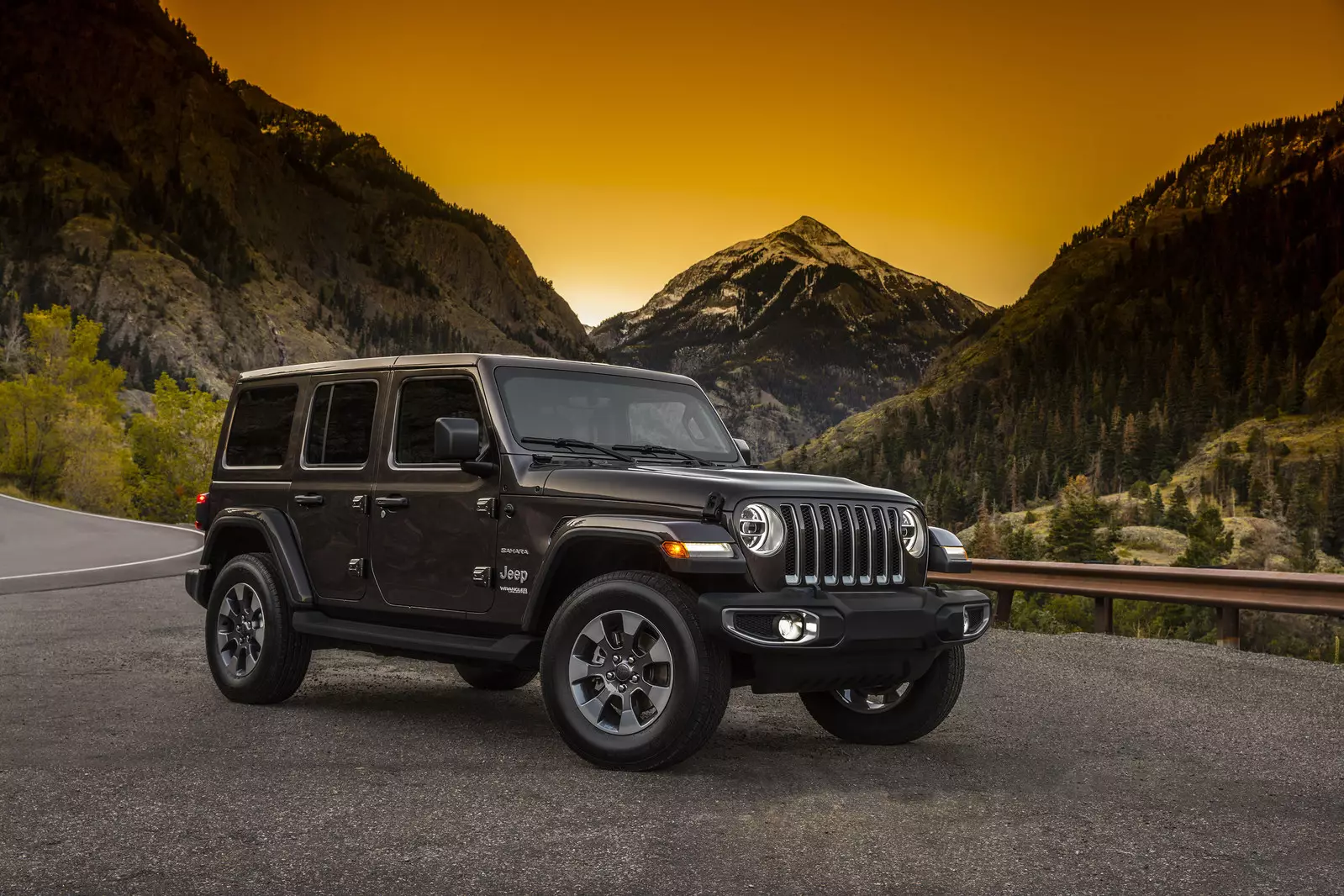
While these upgrades have enhanced the dependability of the Wrangler models, the downside is that the prices for used JL variants remain relatively high, even for those with higher mileage from 2018-2020.
Typically, a 4-door Unlimited model with 50,000-100,000 miles can cost between $25,000 to $35,000.
However, the inclusion of newer technology, improved efficiency, and long-term durability may justify the investment if it aligns with your financial plan.
3. Jeep Grand Cherokee (WK2 2011 – 2021)
known for its enduring nature and is highly regarded for its reliability, particularly the 3.6L Pentastar V6 variants.
With proper care, these models typically deliver strong performance and can reach a lifespan of 200,000+ miles without major issues.
For those on a budget, pre-owned WK2 models from 2011-2014 equipped with the 3.6L V6 engine are available in the price range of $10,000-$18,000, typically with 100,000-150,000 miles on the odometer.
It is advisable to choose the 4×4 Laredo, Limited, or Overland trims from regions with low humidity to prevent rust problems. More recent models from 2015-2021, with lower mileage, may cost between $18,000 and $30,000.
4. Jeep Cherokee (KL 2014 – Present)
The current generation of the Jeep Cherokee, known as the KL, is a cost-effective and efficient choice for those interested in midsize SUVs with high mileage.
Equipped with either the 2.4L Tigershark or 3.2L Pentastar engines, these vehicles have demonstrated reliability.
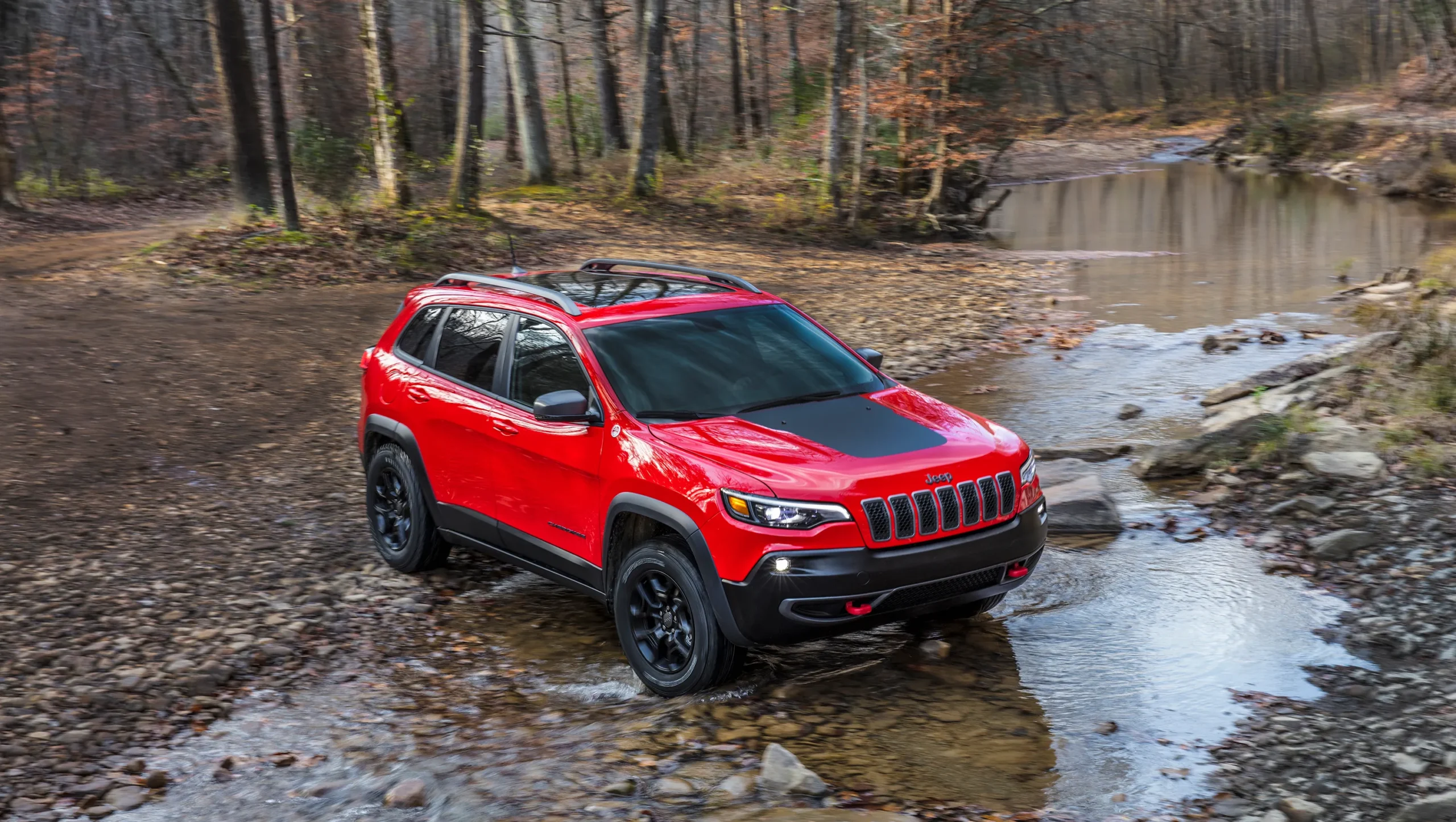
While older models can now be purchased for less than $15,000, it is important to be cautious of the problematic 9-speed automatic transmission in the initial 2014-2016 KL Cherokee models.
The transmissions in the 2017 models have undergone improvements. With proper maintenance, these contemporary Jeeps can easily exceed 150,000-200,000 miles. Although used Jeeps with higher mileage should be carefully examined, selecting the right model from previous generations can still result in a smart investment.
By conducting thorough research and adhering to a pre-purchase checklist, you can acquire a rugged vehicle ready for off-road adventures to enjoy for years to come.
Final Words
Hopefully, you have found the answer to your question: “Should I Buy a Jeep Cherokee With Over 100K Miles?” Don’t be deterred solely by a high odometer reading when considering a pre-owned Jeep that has captured your interest. Wranglers, Grand Cherokees, and even smaller Cherokees have proven to be highly capable and dependable vehicles even after surpassing the 100,000-mile mark.
The crucial factor lies in adhering to the thorough inspection process we outlined – which includes reviewing maintenance records, conducting mechanical assessments, and researching common issues associated with the particular model.
It’s important to take your time, exercise caution, and seek the expertise of a seasoned mechanic to assess any potential purchases before proceeding. By conducting proper research, you can acquire an exceptional off-road vehicle at a fraction of the cost of a new one. Just ensure to allocate funds for any necessary repairs or maintenance upfront. With consistent care and upkeep moving forward, your high-mileage Jeep will be prepared to embark on many more adventure-filled miles ahead!


